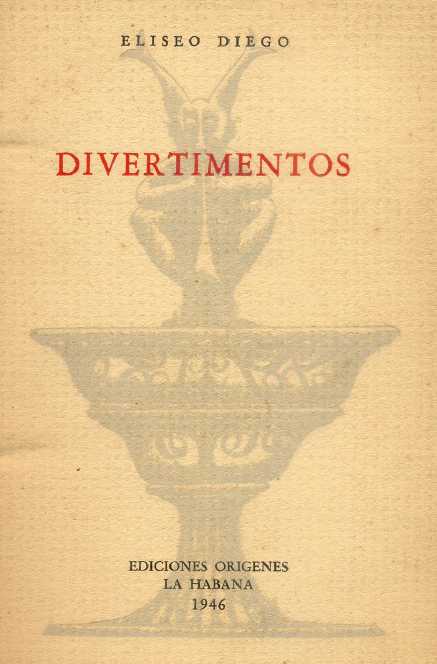4.1.2.7.10 The text “Divertimentos”, published by Eliseo Diego (1920 – 1994) in 1946

If we adhere to the strict meaning of the term “divertimento,” we find that in its first meaning it refers to a lighthearted artistic or literary work, whose purpose is merely to entertain; however, the text with this title by Eliseo Diego and published by Ediciones Orígenes in 1946 carries within it a semantic depth that does not aim solely at hilarity; although it is not incompatible with it either.
The notebook begins with the narrative piece entitled “Of the Family Sheets,” which already reveals the subtle interplay between dream and reality that would also be present in some areas of her poetry. This is followed by the text “Of the Sisters,” developed in the intricacies of death, centered around the Greek myth of the Fates and, in a broader sense, implying a prophecy in terms of the hesitation between validity and self-fulfillment.
The text “De Jacques”, which has been anchored in the imagination of many children of post-revolutionary generations since school textbooks, poses a sudden change of perspective by presenting the corsair Jacques on the prow of his ship about to give an order, suddenly transformed into amazement when a child decides to acquire the ship and it and Jacques are wrapped in paper like a precious toy, thus reiterating the ambiguity between reality and fiction evident in other texts.
In “De Esperanza Venablos” and “Del Objeto Cualquiera,” the topic of the real impossibility of possession, possible only in dreams, is deployed; the chickpeas the old woman yearns for and the figure of the three graces glimpsed by the child in the shop window are symbols of the desired impossible that is achieved in dreams, which are considered a more solid dimension of reality.
One of the most moving texts in the notebook is entitled “Of the Dog,” alluding to helplessness and, in a way, to the social pirouette inherent to survival, which is also human, since there is an implicit personification in the emotionality attributed to the dog. The text is transcribed in full:
“To make matters worse, he was infected with more fleas than ever. It was already bad enough to have suddenly encountered that tenacious iron obstacle that stretched the entire length and breadth of the café where, in exchange for standing ridiculously on two legs and wagging his tail until he thought he was going to lose it, they gave him food every day.
And yet it wasn’t hunger or fleas, which weren’t fleas, but scabies gnawing at his back. What made him lie down against the rough wall, wrapped in the cold, salty breath of the ocean, to die, was having lost his precious name in that way.
The interrelation between dream and reality is reiterated in “De la torre,” where the figures of the lion and the hunter also indicate the cyclical nature of life and death. “De los zapatos viejos” and other texts evoke the nostalgia for abandonment and, to a certain extent, the meaning of uselessness and death through a hylozoic conception that seems to transcend the purely literary. This book prompted a eulogistic essay by José Lezama Lima, from which the concluding paragraph is quoted:
“The pleasure that this book by Eliseo Diego has given me can only be compared to that of some nocturnal festivals created by Zabaleta or to the surprised dance by Alain Fournier. Its fragrance and its purity have created a fauna burnished by the dew. I do not know, in the history of Cuban prose of the last twenty years, a book of such enchanted clarity.”








